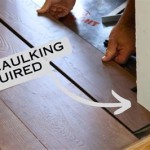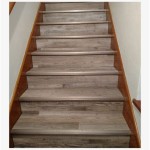How to Remove Acrylic Paint From Floorboards
Acrylic paint is a popular choice for artists and DIY enthusiasts due to its quick drying time, vibrant colors, and water-soluble nature. However, accidents can happen, and spills on floorboards can be a cause for concern. Thankfully, removing acrylic paint from floorboards is achievable with the right tools and techniques. This article will guide you through the process, outlining effective methods to restore the surface to its original condition.
Understanding Acrylic Paint and Floorboards
Acrylic paints are water-based, making them relatively easy to remove from surfaces like floorboards. They typically dry quickly, forming a thin, durable film. However, the specific type of floorboard material – whether it's hardwood, softwood, or laminate – will influence the cleaning process. Hardwood and softwood are porous materials, allowing paint to penetrate deeper, while laminate is more resistant.
Essential Tools and Supplies
Before embarking on the removal process, gather the following essential tools and supplies:
- Rubber Gloves: Protect your hands from paint and cleaning solutions.
- Safety Glasses: Ensure eye protection during the cleaning process.
- Paint Scraper: A tool with a sharp blade designed for removing paint.
- Putty Knife: A versatile tool for scraping and lifting paint.
- Sandpaper: Used for smoothing out any remaining paint residue.
- Cleaning Rags: Absorbent cloths for wiping away paint and cleaning solutions.
- Warm Water: For diluting cleaning solutions and rinsing the surface.
- Dish Soap: A mild detergent for cleaning and loosening paint.
- Mineral Spirits: A paint thinner for stubborn paint stains. (Note: Use with caution, as it can damage some floor finishes.)
- White Vinegar: A natural cleaning agent that can help remove paint residue.
- Baking Soda: A gentle abrasive for cleaning and removing stains.
- Paint Remover: A specialized chemical designed for removing paint. (Caution: Follow safety precautions and ventilation guidelines.)
Methods for Removing Acrylic Paint
The method you choose for removing acrylic paint will depend on factors such as the amount of paint, the age of the paint, and the type of floorboards. Here are three common methods:
1. Scrapping and Sanding
For fresh paint, scraping and sanding can effectively remove the majority of the paint. Begin by carefully scraping the paint with a paint scraper or putty knife, holding the tool at a shallow angle to avoid damaging the floorboards. Once the bulk of the paint is removed, use sandpaper to smooth out any remaining residue. Work gradually with finer grades of sandpaper, starting with a coarser grit and finishing with a fine grit.
2. Cleaning Solutions
For dried paint, cleaning solutions can help break down the paint and loosen it from the surface. Mix warm water with a few drops of dish soap or white vinegar. Apply the solution to the affected area and allow it to sit for a few minutes. Gently scrub the area with a cleaning rag or sponge, working in a circular motion. Rinse the area with clean water and repeat the process if necessary.
3. Specialized Paint Remover
For stubborn paint stains that resist scraping and cleaning solutions, consider using a specialized paint remover. Choose a remover specifically designed for acrylic paint and follow the manufacturer's instructions carefully. Apply the remover with a paintbrush or a cloth, and allow it to sit for the recommended time. Use a scraper or putty knife to remove softened paint and then thoroughly clean the area with a damp cloth and rinse with water.
Remember to test any cleaning solution or paint remover on an inconspicuous area of the floorboards first to ensure it does not cause discoloration or damage.
Always follow safety precautions when using cleaning solutions or paint removers. Wear gloves, safety glasses, and ensure adequate ventilation. Keep children and pets away from the area.
After removing the paint, inspect the floorboards for any remaining residue or damage. If necessary, use a wood filler to repair any scratches or gouges. Apply a finishing wax or sealant to protect the floorboards from future damage.
Following these steps and using the appropriate tools and methods, you can effectively remove acrylic paint from floorboards and restore their original appearance.

5 Ways To Remove Acrylic Paint From Wood Wikihow

5 Ways To Remove Acrylic Paint From Wood Wikihow

5 Ways To Remove Acrylic Paint From Wood Wikihow

Easily Remove Paint From Your Floors

5 Ways To Remove Acrylic Paint From Wood Wikihow

5 Ways To Remove Acrylic Paint From Wood Wikihow

5 Ways To Remove Acrylic Paint From Wood Wikihow

Does Wd 40 Remove Paint From Hardwood Floors Mr Sander

Goof Off 12 Oz Paint Splatter Remover For Hardwood Fg900 The Home

4 Ways To Remove Paint From Wood Wikihow
See Also







